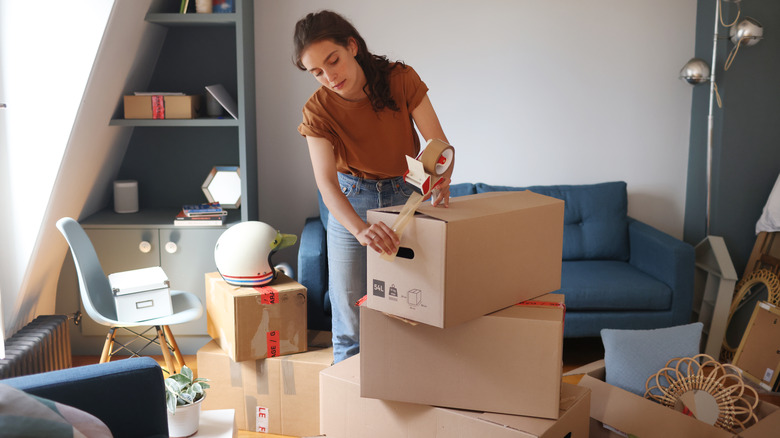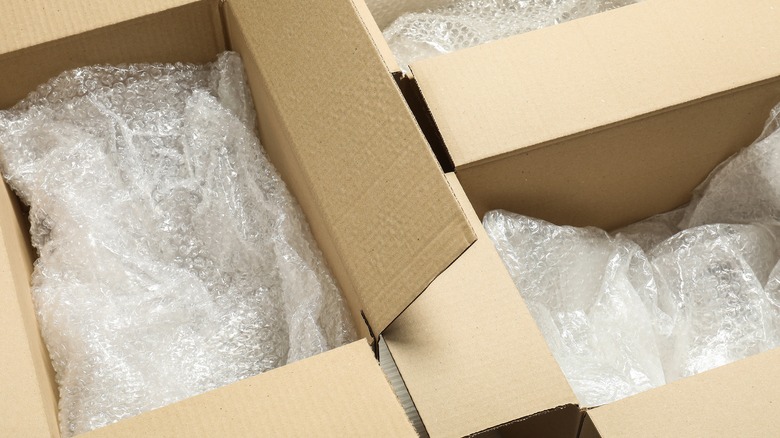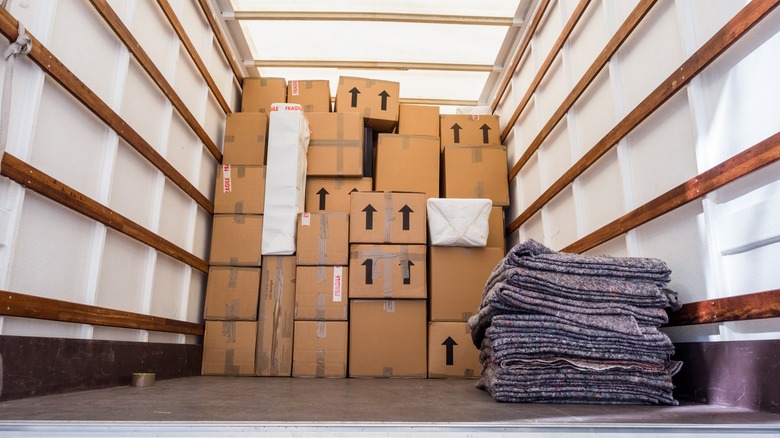How To Pack Like A Pro To Ensure Nothing Breaks In Your Moving Boxes
You've probably heard that moving is one of the most stressful life events. Not only do you have to pack up your life and move apartments or houses, but you may also have to downsize to a smaller space, which can be particularly taxing. There's also the stress of packing itself, and whether you use a moving service or do the heavy work yourself, it's important to ensure that your items get to their final destination in one piece. After all, the average cost of a move is $2,300 to $4,300, and no matter what you pay, it should end in a successful move.
Even the smallest of moves, such as down the street or across town, can have a lot of moving pieces to track. If you're prepping for a cross-country move, you might be tempted to just call it quits, get rid of everything and start anew. While that feeling is understandable, you don't have to obsess over packing every little thing with copious amounts of bubble wrap. Just follow these easy tips, and you can pack your moving boxes like a pro.
Layering inside your boxes is key to packing like a pro
The first thing key to making sure nothing breaks during your move is to layer the packing inside the box. The best way to pack your items is to layer them, with the large, heavy items on the bottom and the lighter items on top of those.
Start with providing a cushion for the bottom of the box. This is a great reason why you should save grocery bags when preparing and packing for a move. You can fill the grocery bags with shredded paper or just layer as many as you can in the box. Once you add the cushioning to the box, place the heaviest items on top, followed by smaller items. Make sure the space inside the box is filled with extra bags, clean towels, or t-shirts. Never leave open space inside the box because you want to make sure contents don't shift during the move. You can also add an extra buffer for protection by placing a garbage bag over your hanging clothes, then folding them in half to stash inside the box.
The remaining room inside your moving box can be used to store small items, such as silverware in the caddy, labeled bags of electronic cords, or kid's toys. To make unpacking easier, however, don't mix contents from other rooms. Pack the box securely, then use tape to seal, marking down the contents on the side. After you've packed your boxes, label them carefully with "this end up," especially if you have heavier items in the box and the label isn't already printed on there. You'd hate to turn over a box only to see that the weight distribution makes the box break.
More ways to ensure nothing breaks during moving
One piece of bad moving advice that can derail the whole process is using any old box. Since you're mixing light and heavy items, make sure you have a good sturdy box when you pack. If you buy professional moving boxes, always check the bottom for the box certification stamp. This stamp states the maximum weight the box can hold and how much pressure it can withstand without crushing, often called the "edge crush test."
As you pack, don't cram the box so full that you can barely close it. You need to leave at least an inch of space free at the top, as bulging boxes can be harder to stack, plus may run the risk of splitting open. You may also consider packing small boxes and nestling them inside larger boxes, again ensuring everything is packed well and doesn't shift during moving. This method is helpful for smaller items that need a home but would be crushed with larger items, like a set of measuring cups from your kitchen. If you just threw them in your box with the frying pan, there's a chance they could be crushed. Just don't forget to label the smaller boxes as well, as nobody wants a pile of "mystery boxes" when they're just trying to set up a room.


